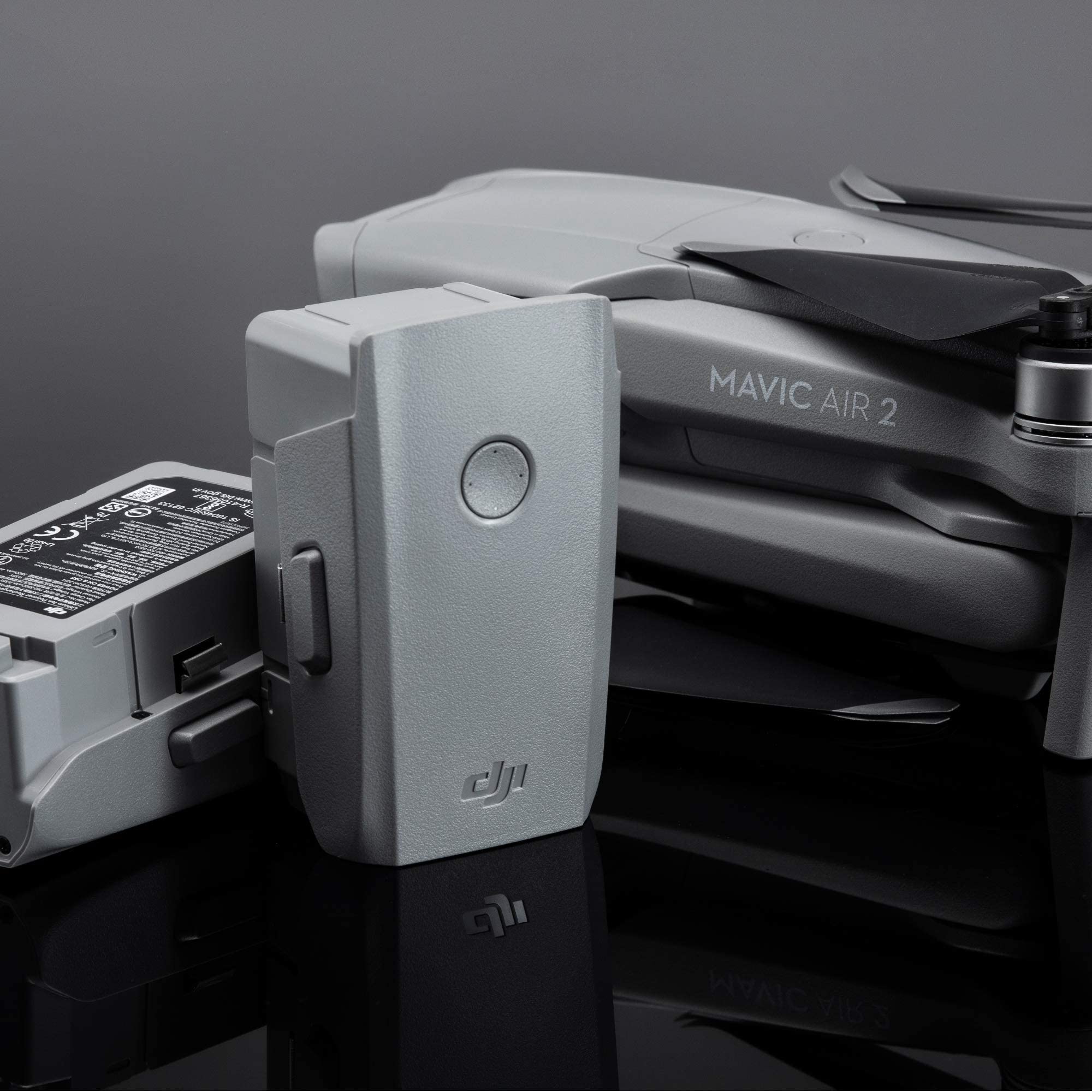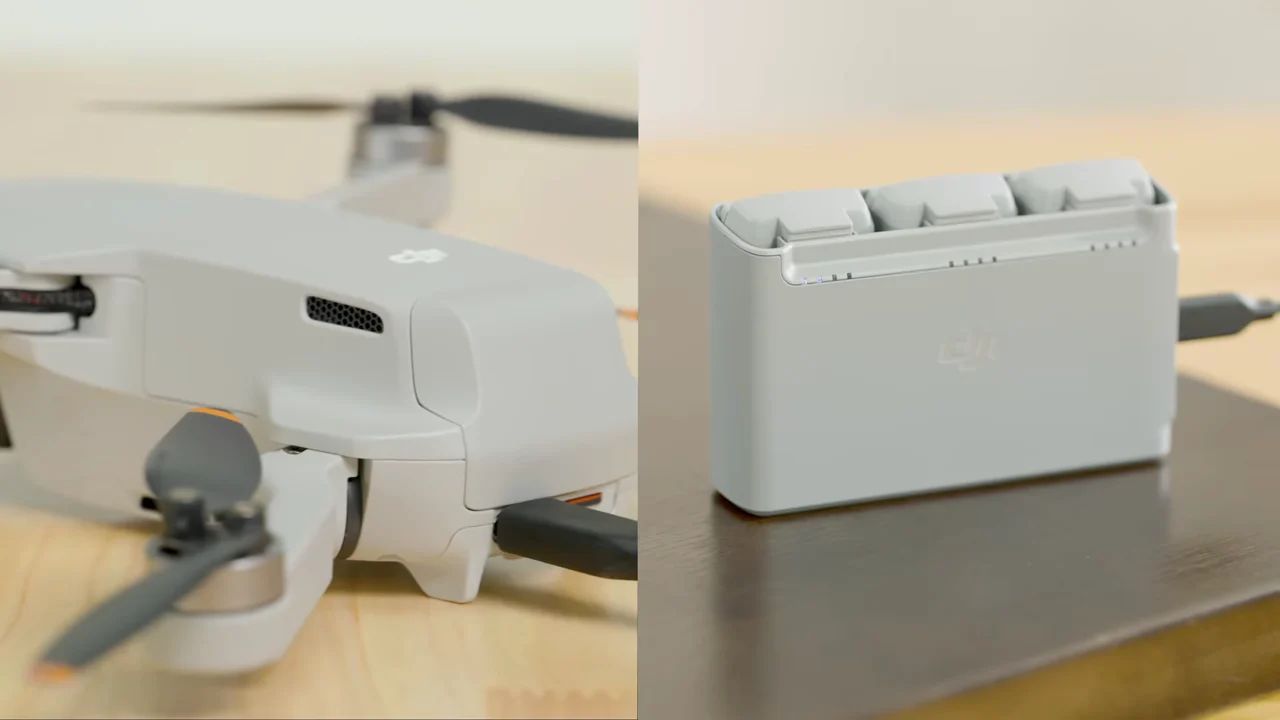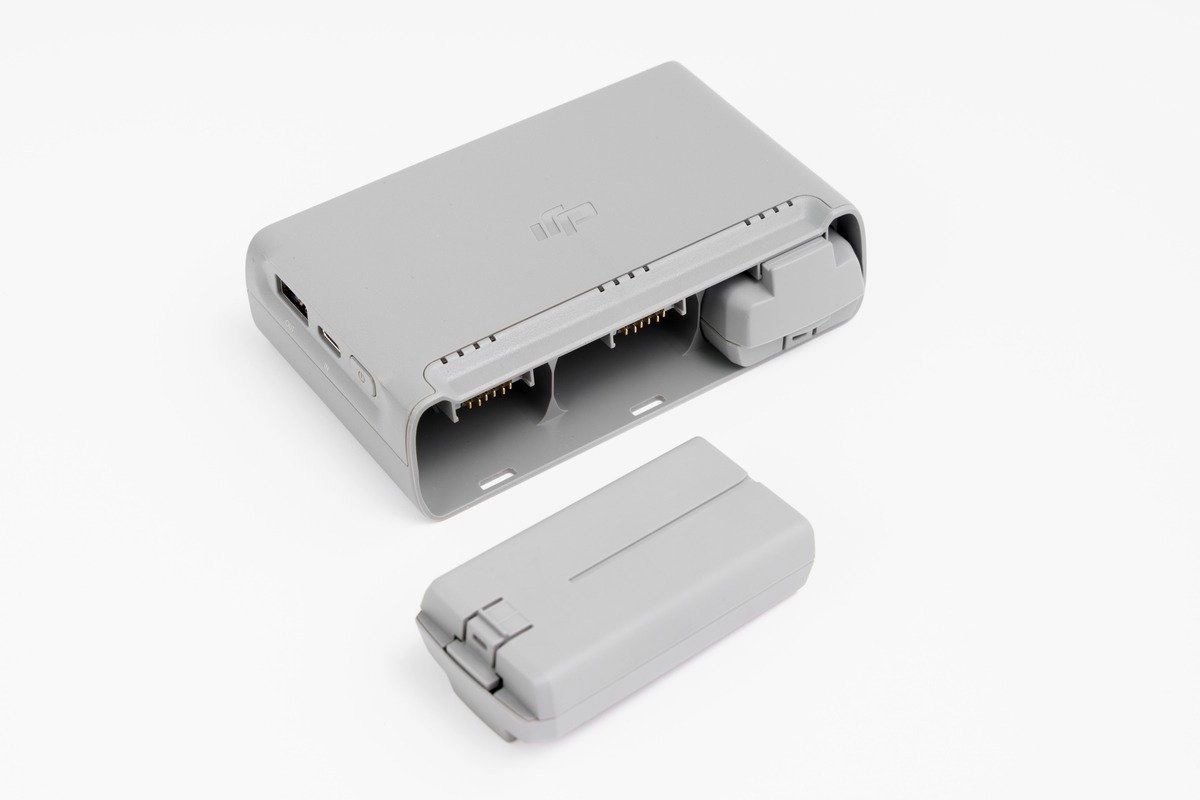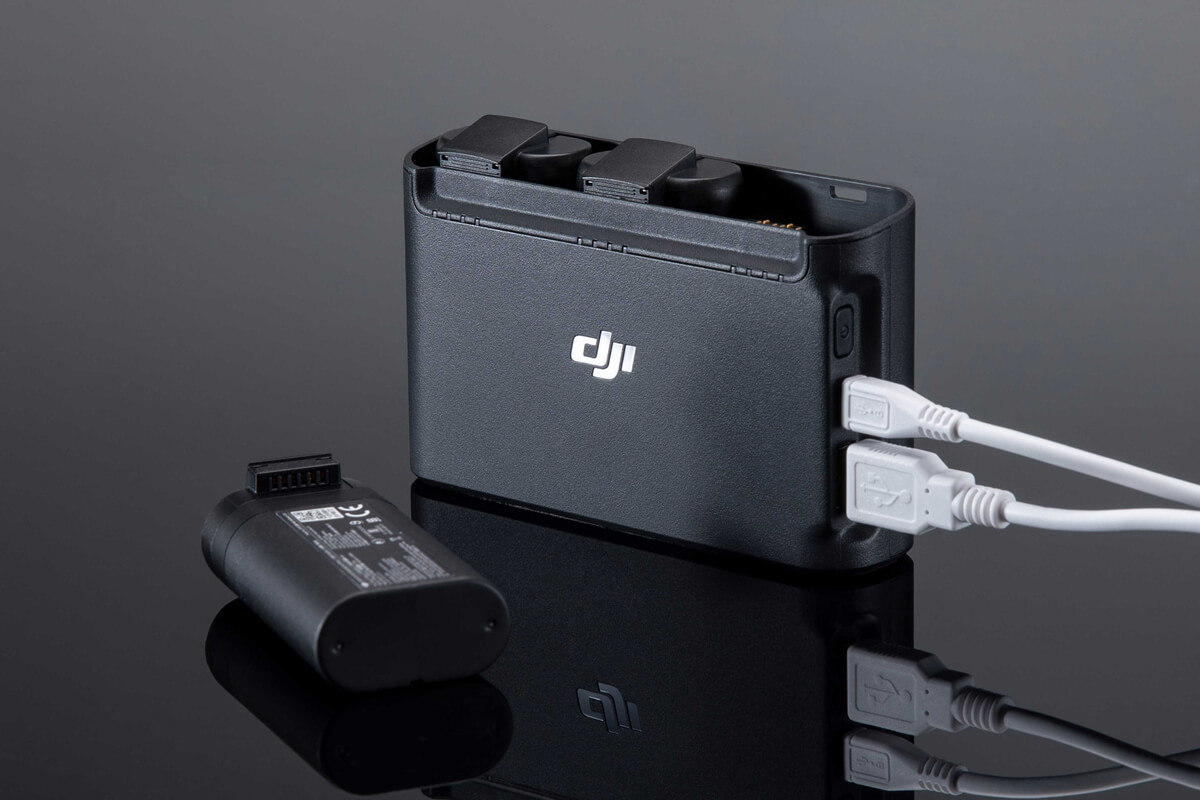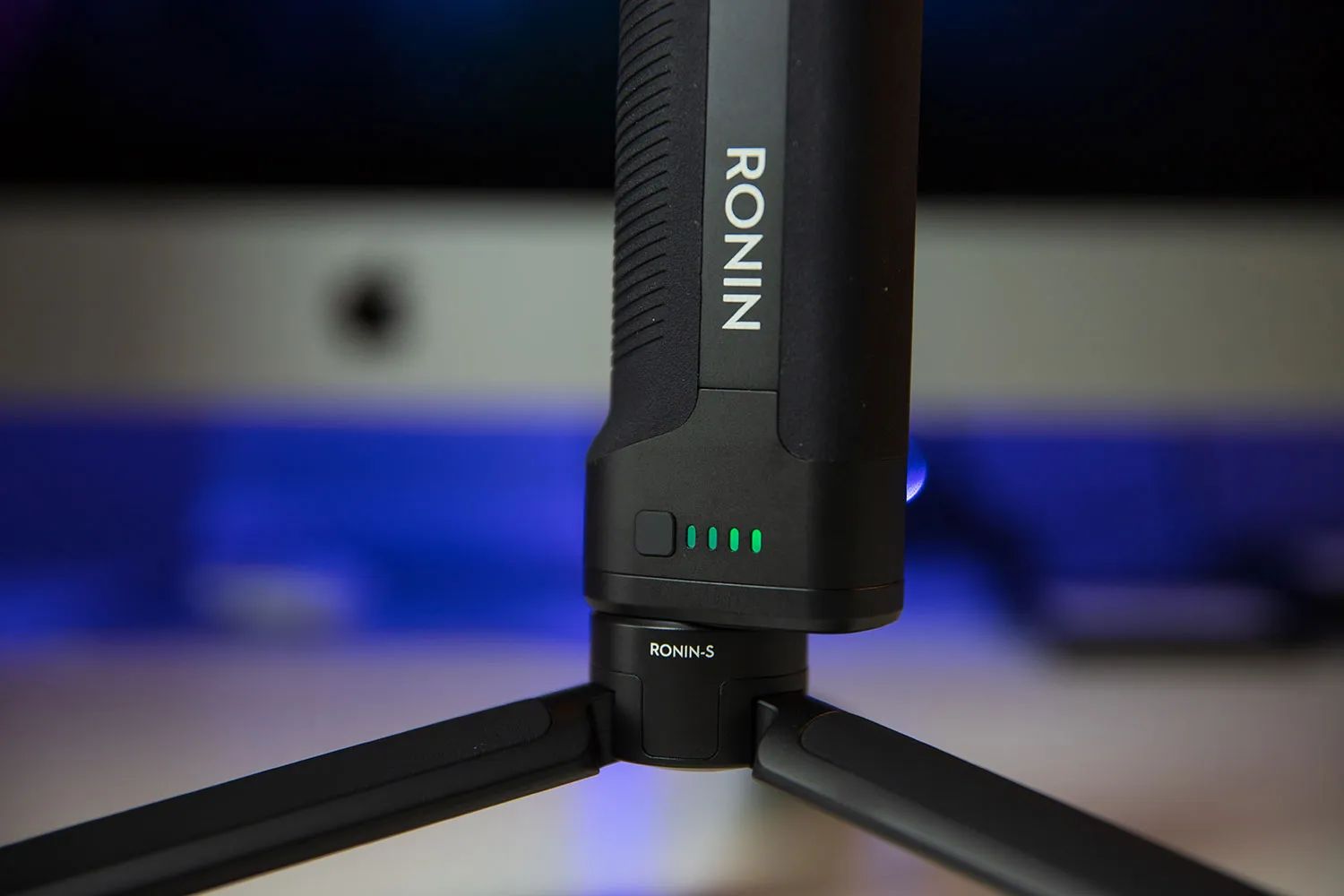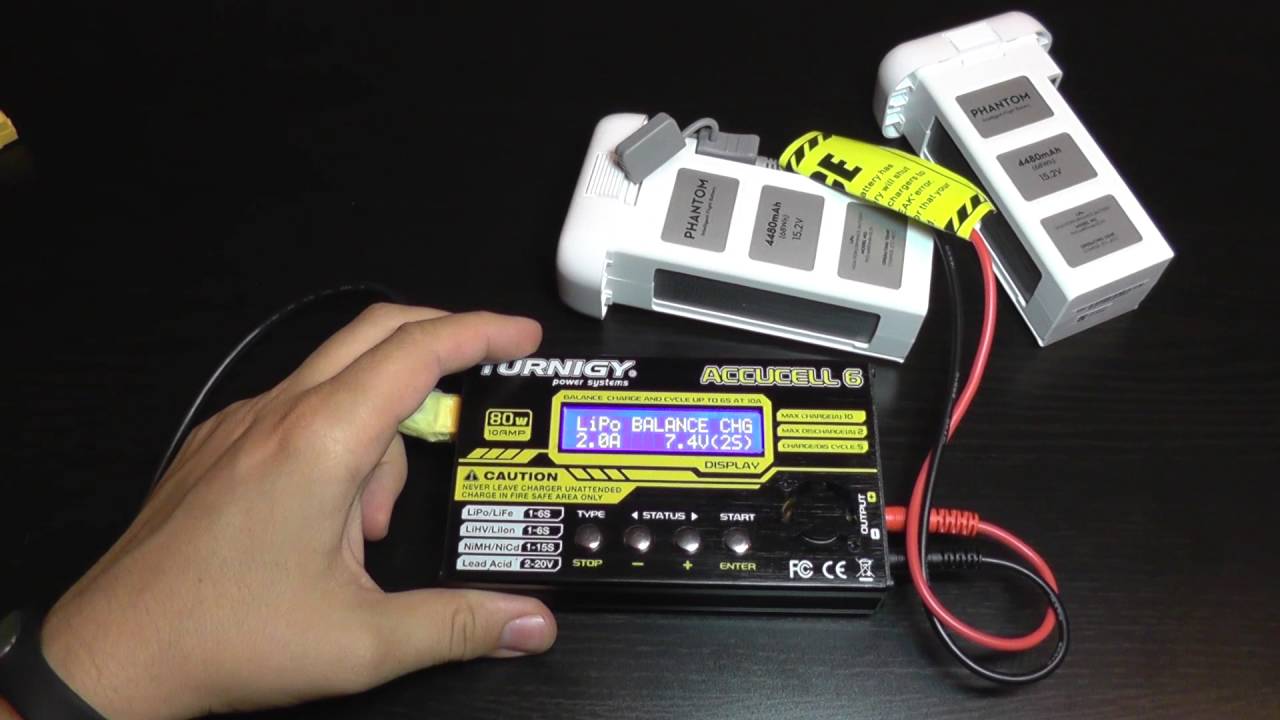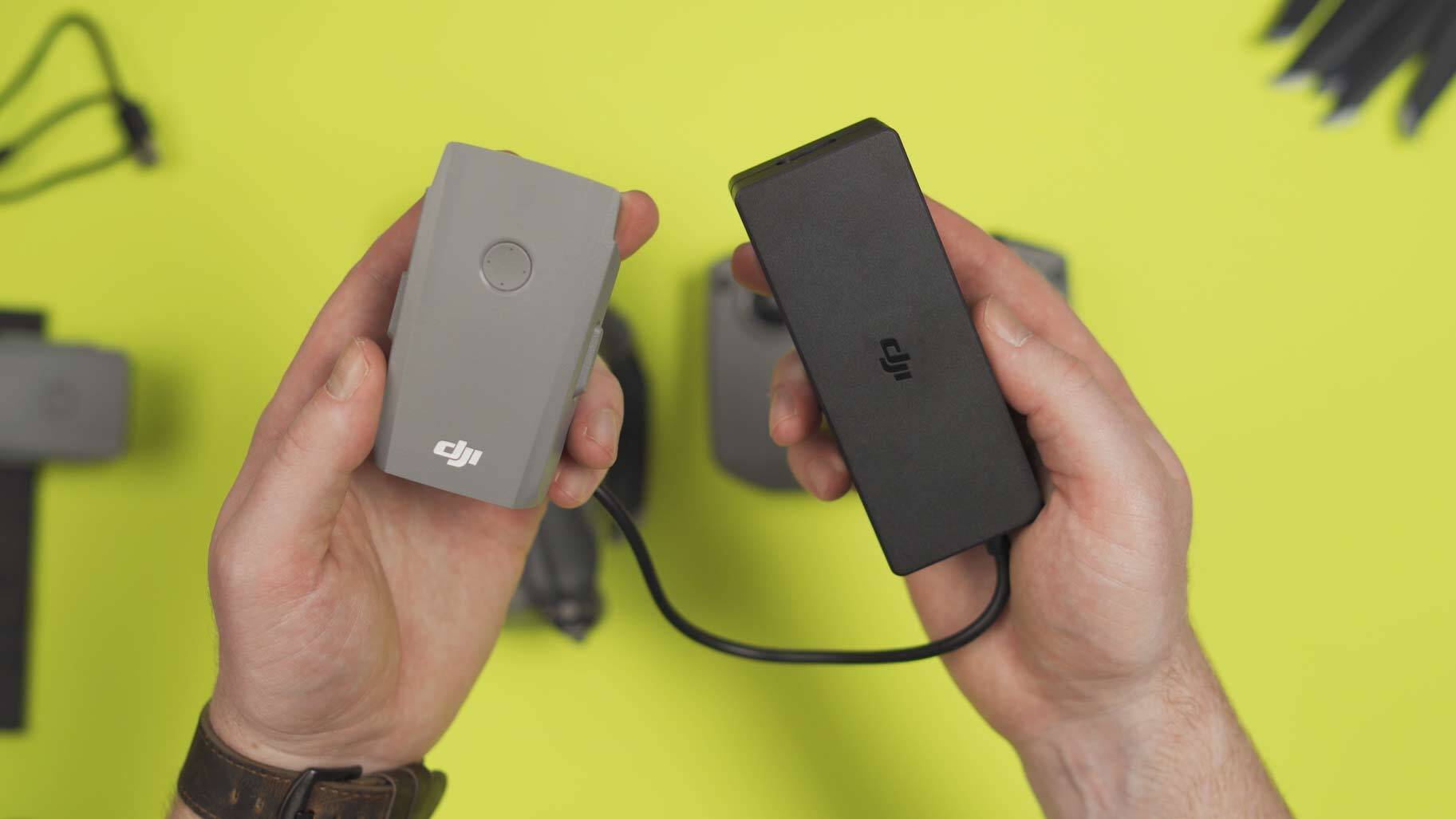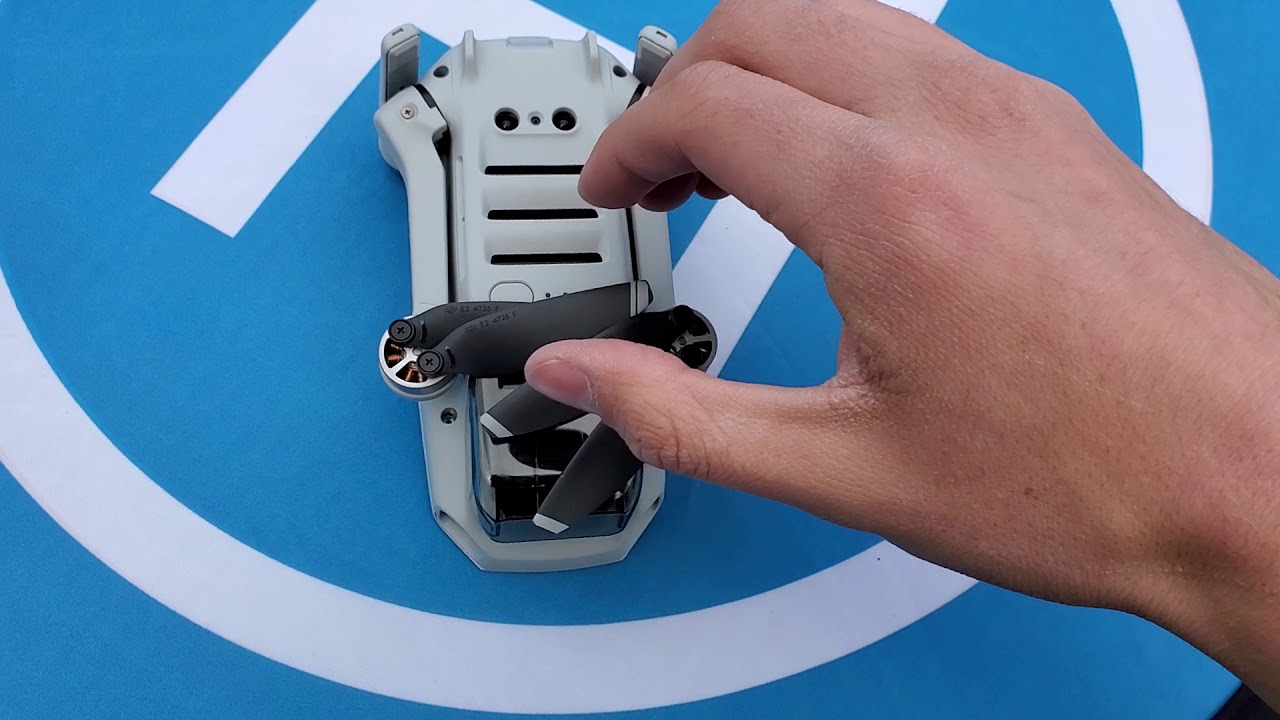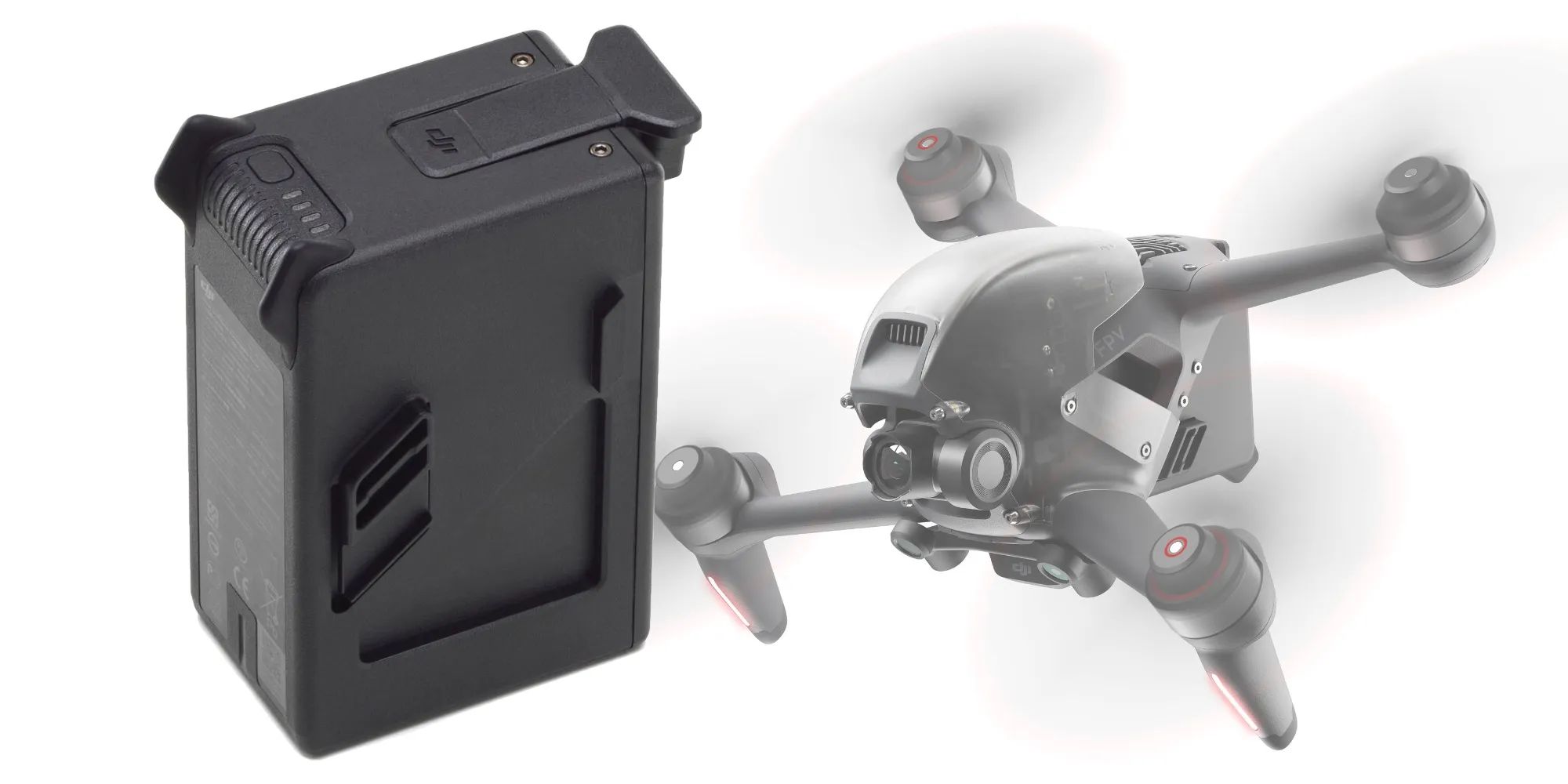Why discharge your DJI battery?
Discharging your DJI battery is an essential step in maintaining its overall health and maximizing its lifespan. While it may seem counterintuitive to purposely drain your battery, there are several important reasons why this practice is highly recommended.
Firstly, discharging your DJI battery helps prevent voltage imbalance. During regular use, the cells within the battery may not discharge at an equal rate, leading to an imbalance in voltage levels. By fully discharging the battery, you can ensure that each cell is depleted evenly, minimizing the risk of voltage fluctuations and potential damage to the battery.
Secondly, discharging your battery helps maintain its capacity. Over time, lithium-ion batteries naturally experience a phenomenon known as “voltage depression” or “battery memory.” This occurs when the battery is consistently charged and discharged without reaching its full capacity. Discharging the battery can help break this memory effect and restore its full potential, allowing for longer flight times and better overall performance.
Furthermore, discharging your DJI battery is crucial for long-term storage. If you plan to store your drone for an extended period, it is important to discharge the battery to around 40-60% capacity before doing so. This helps prevent the battery from self-discharging excessively during storage, which can lead to irreversible damage and potentially render the battery unusable.
Lastly, DJI drones often come with firmware updates that may require the battery to be fully discharged before installation. Following the manufacturer’s guidelines and fully discharging the battery can ensure a smooth and error-free firmware update process.
Overall, discharging your DJI battery is an essential maintenance practice that helps balance voltage levels, maintain capacity, prepare for storage, and comply with firmware update requirements. By taking the time to discharge your battery properly, you can prolong its lifespan and ensure optimal performance for your DJI drone.
When should you discharge your DJI battery?
Knowing when to discharge your DJI battery is important to ensure its longevity and performance. While there are no set rules on when exactly you should discharge your battery, there are certain scenarios where it is recommended.
One common situation is when the battery has been unused for an extended period. If your DJI drone has been sitting idle for a month or more, it is advisable to discharge the battery before the next use. This helps to maintain its health and prevent any potential issues that could arise from prolonged inactivity.
Another instance where discharging is recommended is when you notice a significant decrease in flight time or overall battery performance. Over time, the capacity of the battery can naturally degrade. By fully discharging and recharging the battery, you can calibrate its internal circuitry and potentially improve its performance.
If you plan on storing your DJI drone for an extended period without use, it is crucial to discharge the battery to around 40-60% of its capacity. This ensures that the battery does not self-discharge excessively during storage, which can lead to damage and affect its overall lifespan.
Additionally, discharging the battery is necessary when following firmware update instructions. DJI often recommends fully discharging the battery before installing firmware updates to avoid any potential issues during the update process. Adhering to these guidelines helps ensure a smooth and successful update.
Ultimately, keeping an eye on your DJI battery’s performance and flight time can help determine when to discharge it. If you notice a significant decrease in performance or plan on storing the drone for a while, it’s best to discharge the battery. Regular maintenance and monitoring of your battery’s condition play a crucial role in maximizing its lifespan and ensuring optimal drone performance.
Safety precautions before discharging
Before you embark on the process of discharging your DJI battery, it is important to take certain safety precautions to ensure a smooth and risk-free procedure. By following these guidelines, you can minimize the chances of accidents or damage to both yourself and the equipment.
1. Read the manufacturer’s instructions: Familiarize yourself with the specific discharging guidelines provided by DJI for your particular drone model. Each drone may have slight variations in the discharging process, so it’s important to follow the instructions accordingly.
2. Ensure a well-ventilated area: Find a well-ventilated space, ideally outdoors, to carry out the battery discharge process. This helps prevent the buildup of any potentially harmful gases that may be released from the battery during the discharging process.
3. Remove the battery from the drone: Before discharging the battery, ensure that it is disconnected from the drone or any other device it may be connected to. This prevents any accidental power-ups or interference during the process.
4. Use protective equipment: Wear appropriate protective gear, such as gloves and safety goggles, when handling the battery for discharge. This protects you from any potential battery leakage, accidental spills, or contact with corrosive substances.
5. Check the battery condition: Before discharging, visually inspect the battery for any signs of damage or swelling. If you notice any abnormalities, such as bulging or punctures, do not proceed with the discharge process and contact the manufacturer for further assistance.
6. Use a dedicated battery discharger: Utilize a dedicated DJI-approved battery discharger, if available, to ensure a controlled and safe discharge process. These devices are designed specifically for discharging DJI batteries and often include built-in safety features.
7. Monitor the battery: During the discharge process, keep a close eye on the battery to ensure it does not overheat or exhibit any unusual behavior. If you notice any excessive heat, smoke, or sudden changes in the battery’s condition, stop the discharge immediately and seek professional advice.
By taking these safety precautions, you can minimize the risks associated with discharging your DJI battery. Prioritize your safety and the safety of your equipment to ensure a successful and risk-free battery discharge process.
Method 1: Flying your drone to discharge the battery
One of the simplest and most efficient methods to discharge your DJI battery is by flying your drone. This method allows you to not only drain the battery but also gives you an opportunity to enjoy some flight time. Here’s how you can do it:
1. Find an open and safe location: Choose a suitable outdoor area where you can safely fly your drone without any obstacles or potential hazards.
2. Check flight time remaining: Before taking off, check the flight time remaining on your drone’s controller or mobile app. It is recommended to have at least 20-30% battery capacity remaining to ensure a safe landing.
3. Fly in a controlled manner: Take off and fly your drone in a controlled manner, avoiding excessive maneuvers or high-speed flights. Maintain a stable altitude and fly at a moderate speed to avoid unnecessary strain on the battery.
4. Monitor battery level: Keep a close eye on the battery level while flying. Most DJI drones have a battery level indicator on the controller or app, allowing you to monitor the discharge progress.
5. Land safely: Once the battery reaches a low level, safely land your drone. Avoid full depletion of the battery, as this can cause damage to the battery cells.
6. Wait for cool down: Allow the battery to cool down for a few minutes before disconnecting or recharging it. This helps prevent any potential damage caused by residual heat.
Flying your drone to discharge the battery not only serves the purpose of discharging but also allows you to enjoy the experience of flying. It is essential to follow safety guidelines, adhere to local regulations, and maintain control of your drone throughout the flight.
Note that the amount of time required to fully discharge the battery will depend on the initial battery capacity and the flight conditions. Keep in mind that this method may not be feasible in certain situations, such as adverse weather conditions or limited access to a suitable flying area.
Method 2: Using the DJI Battery Discharge Hub
If you prefer a more controlled and automated method of discharging your DJI battery, utilizing the DJI Battery Discharge Hub is an excellent option. This accessory is designed specifically for discharging DJI batteries and offers a convenient and efficient solution. Here’s how you can use it:
1. Gather the necessary equipment: Make sure you have the DJI Battery Discharge Hub and a power supply that is compatible with the hub. Check the specifications and requirements mentioned in the user manual or on the DJI website.
2. Connect the Battery Discharge Hub: Connect the Battery Discharge Hub to your DJI battery using the provided connection cables. Ensure a secure and proper connection to prevent any interruptions during the discharge process.
3. Connect the power supply: Connect the power supply to the Battery Discharge Hub. Ensure that the power supply is turned off before connecting it to the hub to avoid any electrical mishaps.
4. Power on the hub and adjust settings: Turn on the power supply and then switch on the Battery Discharge Hub. Follow the instructions provided in the user manual to adjust the discharge settings, such as the discharge current and duration.
5. Start the discharge process: Once the settings are adjusted, initiate the discharging process as per the instructions. The hub will automatically discharge the battery to the desired level following the specified settings.
6. Monitor the discharge process: Keep an eye on the discharge progress by monitoring the battery’s charge level or any indicators provided by the Battery Discharge Hub. This will help you ensure that the battery is being discharged properly.
7. Safely disconnect and store: Once the discharging process is complete, safely disconnect the Battery Discharge Hub from the power supply and the DJI battery. Allow the battery to cool down before handling or storing it.
Using the DJI Battery Discharge Hub offers a reliable and hands-off method of discharging your DJI battery. It allows you to precisely control the discharge settings and ensures a safe and controlled discharging process. However, it’s important to follow the manufacturer’s guidelines and recommendations while using this accessory to prevent any damage to the battery or the hub itself.
Note that the actual discharge time using the Battery Discharge Hub may vary depending on the battery capacity, discharge settings, and other factors. It is always advisable to monitor the process and ensure that the battery is discharged to the desired level before disconnecting it from the hub.
Method 3: Manual discharge using a power supply
If you don’t have access to specialized DJI accessories or prefer a more hands-on approach, you can manually discharge your DJI battery using a power supply. This method allows you to control the discharge process while ensuring the safety of the battery. Here’s how you can do it:
1. Gather the necessary equipment: You will need a compatible power supply, such as a variable voltage power supply or a DC power supply, that can deliver the appropriate voltage for discharging your DJI battery. Make sure to check the manufacturer’s guidelines or specifications for the correct voltage range.
2. Connect the power supply: Connect the power supply to your DJI battery using the appropriate connectors or cables. Ensure a secure and solid connection to avoid any interruptions during the manual discharge process.
3. Set the voltage and current: Adjust the voltage and current output of the power supply to the recommended discharge levels specified by DJI. This information can be found in the user manual or on the DJI website for your specific drone model.
4. Begin the discharge process: Once the voltage and current are set, you can start the discharge process by turning on the power supply. The power supply will provide a controlled current flow to gradually discharge the battery.
5. Monitor the discharge progress: Keep a close eye on the voltage and current readings displayed by the power supply to monitor the discharge progress. Ensure that the battery voltage is decreasing steadily and within the recommended range.
6. Disconnect and cool down: Once the battery reaches the desired discharge level, safely disconnect the power supply from the battery. Allow the battery to cool down for a few minutes before handling or storing it.
Manual discharge using a power supply gives you greater control over the discharge process and allows you to tailor it to the specific requirements of your DJI battery. However, it is crucial to follow the recommended voltage and current settings to prevent over-discharging or damaging the battery.
Keep in mind that the time required to fully discharge the battery manually will depend on various factors, including the initial battery capacity and the discharge current. It is important to monitor the process closely and ensure that the battery is not over-discharged, as this can cause permanent damage.
By following proper safety precautions and closely monitoring the discharge process, you can successfully discharge your DJI battery manually using a power supply.
Method 4: Using a battery discharger device
If you’re looking for a dedicated and efficient method to discharge your DJI battery, using a battery discharger device specifically designed for this purpose can be a convenient option. These devices provide accurate control over the discharging process and help ensure the safety of your battery. Here’s how you can use a battery discharger device:
1. Choose a compatible battery discharger: Look for a battery discharger device that is compatible with your DJI battery model. Ensure that it has the necessary connectors or adapters to securely attach to your battery.
2. Connect the battery to the discharger: Connect your DJI battery to the battery discharger device using the appropriate connectors or adapters. Follow the manufacturer’s instructions for a proper and secure connection.
3. Set the discharge parameters: Set the desired discharge parameters on the device, such as the discharge current and voltage. Refer to the manufacturer’s instructions or documentation for the recommended discharge levels for your specific DJI drone battery.
4. Start the discharging process: Once the discharge parameters are set, initiate the discharging process using the controls or buttons provided on the device. The battery discharger device will start discharging the battery at the specified parameters.
5. Monitor the discharge progress: Keep a close eye on the battery voltage and discharge current readings displayed on the battery discharger device. Monitor the progress to ensure that the battery is being discharged according to the desired levels.
6. Disconnect and cool down: Once the battery has reached the desired discharge level, safely disconnect it from the battery discharger device. Allow the battery to cool down for a few minutes before handling or storing it.
Using a battery discharger device offers a convenient and reliable method to discharge your DJI battery accurately. These devices are designed to provide controlled and precise discharging, optimizing the battery’s performance and lifespan.
It is important to follow the manufacturer’s guidelines and recommendations while using a battery discharger device to ensure the safety of both the battery and the device itself. Pay attention to the recommended discharge parameters and monitor the process closely to prevent over-discharging or damaging the battery.
By utilizing a battery discharger device, you can efficiently and effectively discharge your DJI battery, ensuring its health and longevity for your future drone flights.
Tips for optimizing battery discharge
Optimizing the battery discharge process is crucial to ensure the longevity and performance of your DJI battery. Here are some tips to help you maximize the effectiveness of your battery discharge:
1. Follow manufacturer’s guidelines: Always refer to the manufacturer’s guidelines and recommendations for the proper discharge procedure specific to your DJI drone model. This ensures that you are following the correct steps and not damaging the battery.
2. Avoid over-discharge: Over-discharging the battery can cause irreparable damage. It is important to discharge the battery to the recommended levels specified by the manufacturer and avoid draining it completely.
3. Monitor the discharge process: Keep a close eye on the discharge progress, whether you are flying your drone, using a discharger device, or any other method. Monitoring the battery voltage levels and discharge current ensures that you are discharging the battery properly and within the recommended limits.
4. Allow for cool down: After the discharge process is complete, allow the battery to cool down before handling or storing it. This helps prevent any potential damage caused by residual heat and ensures a safe handling experience.
5. Store at recommended levels: If you plan to store your DJI drone for an extended period after discharging the battery, make sure to store it at around 40-60% of its capacity. This helps prevent excessive self-discharge during storage and maintains the battery’s health.
6. Avoid extreme temperatures: Extreme heat or cold can adversely affect the battery’s performance and lifespan. When discharging the battery, make sure to do it in a moderate temperature environment to prevent any potential issues.
7. Regularly calibrate your battery: It is beneficial to calibrate your DJI battery periodically to ensure accurate battery level readings and maximize its overall performance. Follow the instructions provided by the manufacturer to calibrate the battery properly.
By following these tips, you can optimize the battery discharge process and ensure the longevity and performance of your DJI battery. Prioritizing proper battery maintenance and adhering to manufacturer’s guidelines will help you get the most out of your battery and enjoy extended flight times with your drone.
Conclusion
Discharging your DJI battery is an essential aspect of battery maintenance that helps balance voltage levels, maintain capacity, prepare for storage, and comply with firmware update requirements. Whether you choose to fly your drone, use a battery discharger device, or any other method, it is important to follow the manufacturer’s guidelines and safety precautions to ensure a successful and safe discharge process.
By discharging your DJI battery, you can prevent voltage imbalances, break battery memory effect, optimize its performance, and prolong its overall lifespan. It is crucial to monitor the discharge process, avoid over-discharging, and allow the battery to cool down before handling or storing it.
Remember to always refer to the manufacturer’s instructions for your specific DJI drone model, as different drones may have slightly different discharging recommendations. Following these guidelines and incorporating the tips for optimizing battery discharge will help you maintain your DJI battery’s health and performance over time.
Proper battery management, including regular discharge and calibration, plays a significant role in maximizing the lifespan and optimizing the flight time of your DJI drone. By incorporating these practices into your drone maintenance routine, you can ensure that your DJI battery continues to provide reliable power for your aerial adventures.







